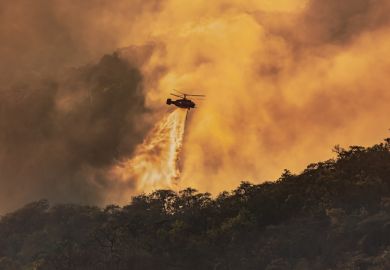Bhopal, set around two magnificent lakes, was once one of India's most attractive cities. When it was chosen to be the capital of India's largest state, Madhya Pradesh, it became a magnet for investment and migrants, an inevitable consequence of what passes for success in a third world city. By the time the Bhopal gas disaster occurred more than 30 per cent of the population were living in slums, many of them in the immediate vicinity of the Union Carbide pesticide plant. In the early hours of December 3 1984 some of those sleeping in the slum just across the road from the plant were woken by an acrid smell that caused them to choke, their eyes to burn and their chests to constrict. A yellow mist was creeping through the slum. Some never woke up. The mist spread until more than 3,500 people were killed, and more than 150,000 people were injured. There is no accurate record of how many people have subsequently died from the effects of methyl isocyanate (MIC) poisoning and of how many people's health has been permanently impaired.
Appropriately this scholarly study of the lessons of Bhopal appears at the time of the tenth anniversary. When I was in Bhopal reporting the demonstration by the victims on the day of the anniversary, I had the sad feeling that the public memory of the disaster and the victims' suffering could not be kept alive much longer. This book should help to ensure that does not happen.
It is also appropriate that almost all the contributors work in American universities and that the book is published by an American university press. It should bring home to Americans the magnitude of the disaster caused by a leak from a factory owned by a subsidiary of one of their multinationals, and the inadequacy of their country's response.
Nowhere was this inadequacy more apparent than in the decision of the American courts to send the legal contest for compensation back to India. The Indian courts failed to complete the trial and supported a settlement between the government of India and Union Carbide, which not a single one of the scholars in this book argues was adequate. Marc Galanter in his essay on "The Transnational Traffic in Legal Remedies'', writes that "to some observers, including myself, the course of events reinforced earlier apprehensions that Indian courts and lawyers were unlikely to bring the matter to a satisfactory conclusion and confirmed the conviction that the matter would have had a more satisfactory outcome if it had remained in the courts of the United States''. Yet the American judge, in deciding to remove the burden of this complicated matter from his court, declared that the Indian legal system was competent to face the challenge. In doing so, according to an American lawyer involved in the case whom I met recently, the judge established a legal precedent that means American multinationals can manufacture hazardous substances in third-world countries without fear of the sophisticated and damage-intensive tort litigation developed in the US. But this point is not made anywhere in the book.
The essays cover a wide variety of subjects. Discussing the impact of the disaster on Union Carbide, Will Lepkowski suggests that for all its success in the courts Union Carbide has been severely damaged and would have done better to "display legal and moral innovation'' and accept an earlier settlement offer. I doubt whether the political pressures on the government of India at that time would have allowed the settlement to go through. Armin Rosencranz, Shyam Divan, and Antony Scott, in their paper on the legal and political repercussions of the disaster in India, suggest that the victims may not have been so dissatisfied with the final settlement as the victims' rights groups which opposed it, some vigorously. There no doubt has been an element of protest for protest's sake in the activists' response to the government's handling of the disaster - but equally it must be said that without pressure from the activists the voice of the victims might have gone unheard. The continuing protests about the distribution of the compensation are entirely justified. Strangely these particular difficulties are not discussed in the book. Another peculiar omission is the continuing controversy over the exact impact of MIC on the long-term health of victims and the Indian government's refusal to publish its medical research.
Almost every paper stresses the special difficulties of risk management in third-world countries, but the most profound contribution comes from Paul Shrivastava. He is a native of Bhopal who lived there for 23 years. Not surprisingly he found the disaster "painfully personal" and his direct involvement in its aftermath has given him particularly valuable insights. He makes what is the fundamental point about the Bhopal disaster. That such a disaster could occur and could cause such suffering, which continues still, must surely raise questions about the whole pattern of industrial development being imposed on the third world. Shrivastava says Bhopal should spark off an economic debate "reassessing the desirability of market-driven industrial development, as against more controlled, environmentally sustainable economic development strategies that balance economic growth with environmental preservation". He maintains that our industrialisation and our consumerism is based on a Judeo-Christian anthropocentrism that exalts man above nature. India, he suggests, should remain faithful to its traditional value, ahimsa, non-violence against humans, and to its traditional respect for all that we call nature. I agree that would be marvellous, but unfortunately Shrivastava does not suggest how India could survive in our industrialised world.
He is not the only scholar in this collection who implies that as India rushes to industrialise and embrace consumerism under the tutelage of the World Bank and the International Monetary Fund with the active encouragement of western businessmen, there will be more Bhopals. None of the scholars in Learning from Disaster claims that lawyers, doctors, social workers, international institutions or the environmental movement have learnt much that will be of value to victims of future disasters.
Mark Tully has reported on the Bhopal gas disaster since 1984 for the BBC and other organisations.
Learning from Disaster:: Risk Management After Bhopal
Editor - Susan Jasanoff
ISBN - 0 8122 3250 X and 1532 X
Publisher - University of Pennsylvania Press
Price - £34.95 and £16.95
Pages - 291pp
Register to continue
Why register?
- Registration is free and only takes a moment
- Once registered, you can read 3 articles a month
- Sign up for our newsletter
Subscribe
Or subscribe for unlimited access to:
- Unlimited access to news, views, insights & reviews
- Digital editions
- Digital access to THE’s university and college rankings analysis
Already registered or a current subscriber? Login



